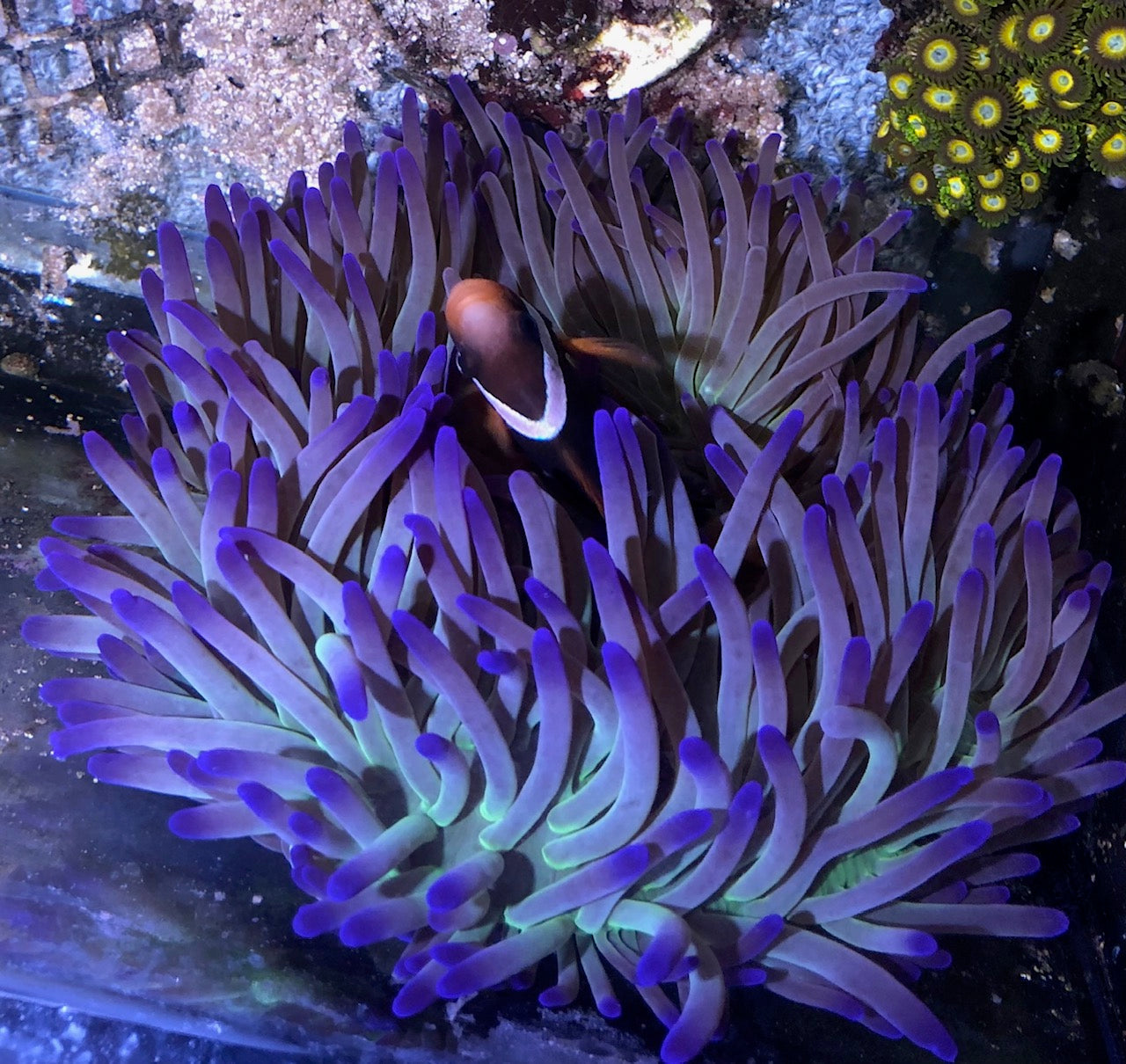
Magnifica Coral with Clownfish: A Stunning Combo for Your Reef Aquarium
For many reef aquarium enthusiasts, few sights are as iconic—or as rewarding—as seeing clownfish nestled comfortably within the flowing tentacles of a healthy Magnifica coral. This stunning symbiotic relationship not only adds visual appeal to your tank but also offers a unique opportunity to observe natural marine behaviors right at home.
Image submitted by: Mike Evans from BC Canada
At Reef Supplies, we understand the delicate balance involved in maintaining this beautiful setup. In this article, we'll dive into everything you need to know to successfully keep Magnifica Coral with Clownfish in your reef aquarium, from coral care and tank conditions to compatible clownfish species and common pitfalls.
What Makes Magnifica Coral Unique?
Also known as Heteractis magnifica or the Ritteri anemone, Magnifica coral is technically a sea anemone, often referred to as a coral due to its appearance and role in reef aquariums. It’s one of the few host anemones that naturally forms symbiotic bonds with clownfish in the wild.
What sets Magnifica apart from other host corals or anemones is its size, movement, and vibrant coloration. Its long tentacles sway beautifully in high flow environments, providing both a dynamic visual and a natural habitat for clownfish.
Why is this combination so popular?
Aside from the aesthetic, the pairing allows reef keepers to replicate natural interactions seen in the ocean. Clownfish benefit from the protection of the stinging tentacles, while the anemone receives nutrients and cleaning in return.
Essential Tank Requirements for Magnifica Coral
Hosting Magnifica coral isn’t for beginners—it requires stable, high-quality water conditions and a well-established reef aquarium. Here’s what you’ll need:
1. Lighting
Magnifica corals are photosynthetic and require strong lighting—ideally in the range of 250-350 PAR. Reef aquarium LEDs from trusted brands like Aqua Illumination, Kessil or Ecotech Radion can provide the intensity and spectrum needed. Keep in mind that poor lighting can cause the anemone to bleach and lose its symbiotic algae (zooxanthellae), affecting its health and appearance.
2. Flow
Moderate to strong, turbulent flow is key. Magnifica corals thrive in dynamic environments, where water movement keeps their tentacles gently swaying. High-end wave makers such as the Jebao or IceCap Gyre Series help simulate natural reef currents.
3. Placement
They prefer high points in the tank—usually on flat rock surfaces where they can stretch toward the light. Magnifica anemones are notorious for moving if unhappy with their spot, so it’s crucial to secure them early on and ensure proper conditions.
4. Water Parameters
-
Temperature: 25–27°C (77–80°F)
-
Salinity: 1.025–1.026
-
Nitrate: <10 ppm
-
Phosphate: <0.05 ppm
-
Calcium: 400–450 ppm
-
Alkalinity: 8–11 dKH
-
Magnesium: 1250–1350 ppm
Stable parameters are a must, so consider a high-quality protein skimmer and dosing system to keep the environment balanced.
Tips for Hosting Clownfish with Magnifica Coral
Species Compatibility
Not all clownfish will naturally pair with Magnifica. The best candidates include:
-
Amphiprion ocellaris (Common Clownfish)
-
Amphiprion percula (True Percula)
-
Amphiprion clarkii
-
Amphiprion melanopus
Young clownfish are more likely to adopt a Magnifica as their host compared to mature ones. Patience is key—it may take days or even weeks for them to bond with the coral.
Introduce Carefully
If the anemone is recently introduced, wait until it’s fully acclimated and stationary before adding clownfish. Overeager clownfish can stress the coral if it’s still settling in.
Feeding
Magnifica corals benefit from occasional feedings of meaty foods such as mysis or finely chopped seafood. This is especially helpful during acclimation or recovery phases.
Common Challenges and How to Overcome Them
1. Wandering Coral
If your Magnifica is constantly moving, it’s likely unhappy with lighting, flow, or placement. Address these variables one at a time, starting with light intensity.
2. Clownfish Not Hosting
Some clownfish raised in captivity may not recognize anemones as hosts. Try dimming the lights in the evening and gently guiding the clownfish toward the coral. In time, instinct may kick in.
3. Bleaching or Shrinking
This is often due to inadequate lighting or fluctuating water parameters. Use test kits from trusted brands and keep an eye on trends with a logging app or controller system.
Must-Have Equipment from Reef Supplies
To support a healthy Magnifica-Clownfish setup, we recommend the following product categories available at Reef Supplies:
-
LED Lighting Systems – For high PAR and customizable spectrums
-
Wave Makers & Powerheads – To provide strong, variable flow
-
Protein Skimmers – To maintain water quality and reduce organics
-
RO/DI Units – For creating pure, stable water
-
Auto Top-Off Systems – To maintain consistent salinity
Browse our collection of reef aquarium essentials here. Not sure what to choose? Contact our team for expert advice tailored to your tank size and livestock plans.
Final Thoughts
Keeping Magnifica Coral with Clownfish is a dream scenario for many reef aquarium hobbyists, and with the right preparation and equipment, it’s a goal well within reach. The key is to create a stable, high-quality marine environment and to understand the unique needs of both the coral and the fish.
Ready to take your reef tank to the next level? Explore our range of reef aquarium supplies at Reef Supplies Canada

